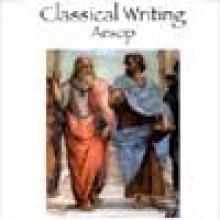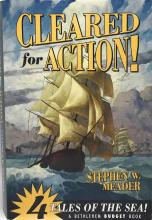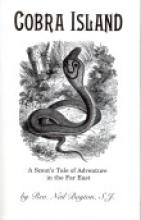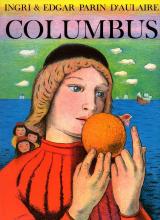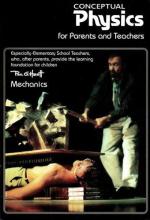No name
City: A Story of Roman Planning and Construction
Various editions available
Classical Writing: Aesop
If you are attracted to the classical method of teaching composition, by analyzing and imitating excellent literature, but have struggled with implementing your own program, then this is the writing series for you. Meticulously thought through and well organized, Classical Writing: Aesop combines structure with flexibility. It can be used with multiple ages in the homeschool and, though designed for beginning writers in grades 1-5, can be adapted for older ages. It uses homeschool-friendly methods such as copywork, dictation, literary discussion and narration, as building blocks for composition skills.
Classical Writing: Aesop is the first in a proposed series which will cover the various steps of the progymnasata (literally "preliminary exercises") by which classical and medieval students were taught to write in a variety of different modes. Classical Writing: Aesop covers the first exercise in the progymnasata, narration of fables. The child learns to retell simple fables and tales in his own words, adding dialogue and description in easy increments over the course of the curriculum. This is the "imitation" component.
The analysis component of the course, in which the literature selection is carefully gone over at several different levels, can be adjusted to the level of the student(s). A week's routine is divided into (1) introducing and discussing the model (2) word skills (3) sentence skills (4) copywork or easy dictation. A beginner would practice basic phonics and learn about how to tell a sentence. A more advanced student would practice beginning dictionary skills and learn the parts of speech. Though a supplemental grammar book is recommended, Classical Writing contains teaching tips and content for all the formal grammar that is needed at this level.
There are plenty of charts to help with the organization of the course. Appendices include some sample fables and tales to use as models, and even a sample 36-week syllabus for busy moms who want to pick up the book and go rather than write their own lesson plans (though a sample lesson plan template is included, too). There is even a description of how the authors, both homeschooling mothers of four, use the program with their own children, with examples of narrative exercises by their children of various ages.
This is not intended to be a self-teaching curriculum. It is meant for the homeschooling parent to use *with* children. It is suggested that half an hour per day be spent on each of the components of the course, analysis and imitation, four days a week. The authors believe that composition is a formative skill, and should be guided: "training in speech and writing cannot be separated from training in virtue". The goal is a "habit of mind" which the students can apply to any writing task. This is a thoroughly Catholic idea – that "academic" skills should be at the service of virtue– that I have not found so well stated and carried through in any other writing curriculum. I am looking forward to using this program with my grade school children, and have already adapted elements of it for use with my older children.
The book is available in a Kinko's copy, or in a PDF file that can be downloaded from the internet. The PDF file is probably the most versatile, since multiple copies of the sample models can be printed out for use with more than one child. See below for the Classical Writing website, which also has a link to a message board for support of this product.
The authors also offer Traditional Tales - Models for Classical Writing, a sourcebook of 36 fables and traditional tales to use with the composition course. The models include fairytales, Scripture, history stories by James Baldwin, in addition to fables by Aesop: all excellent literature which can be read by the fluent primary age child. This book is not an essential companion to Classical Writing, since the sources are all in the public domain and can be found online (some URLs are listed in the handbook). Still, it is a savings of time and effort for the homeschool mom to have them selected and right at one's fingertips. Downloadable PDF format and Kinko's copy format both available from Classical Writing.
Cleared for Action
This "Budget Book" offers four full-length stories in one volume...
Clear for Action by Stephen Meader (copyright 1940) Clear for Action tells of American sailing at the beginning of the War of 1812. Jeff Robbins is a young sailor from Maine, taking his first voyage aboard a cargo schooner bound for the Carribean. All aboard are nervous about being overtaken by British vessels who have been intercepting ships, blocking harbors and making trouble all along the Atlantic Coast. Jeff's world is turned upside down when their schooner is apprehended and he and several of his shipmates are forced into service on a British frigate. Clear for Action is an interesting and worthwhile adventure story that provides all kinds of insightful angles on the War of 1812 and offers a unique contrast to very-British Midshipman Quinn collection. The story wraps up amidst interesting plot-twists – a deserted island, buried treasure and big plans.
Reviewed 4-29-02
Whaler Round the Horn by Stephen Meader (copyright 1950)
Stephen Meader's "whaling yarn" brings to life the exciting and dangerous adventures of a New England whaleboat sailing all the way around Cape Horn (at the tip of South America) to the Pacific Ocean. Young Rodney Glenn, an orphan from New Hampshire, has always wanted to be a whaler, and we follow him aboard his first time at sea. Everything is new and exciting to his young eyes and young people of today will readily relate to his adventures.
Historically speaking, it's nice to find a story that gives an honest look at the interesting but sometimes ugly world of whaling without the politically correct shock and contempt with which whalers of the past are generally treated today. This was uniquely important to me in that one of my great-great-great grandfathers was a Portuguese whaler from the Azores. The first time I told my daughter about this ancestor (who was also a third order Carmelite) she reacted with disgust, given her great interest in whales and the number of books and shows on whales she had eagerly digested.
In addition to the whale theme which contains undercurrents of Moby Dick, 19th Century Hawaii provides a unique contrast with the home port in New England and the main character's adventures through massive storms (the Perfect Storm has little on this), harrowing escapes from the "jaws of death" and adventures on a deserted stretch of one of the Hawaiian Islands make for a memorable and engaging story.
Reviews of the other two stories in the Budget Book Cleared for Action by Stephen Meader will be forthcoming.
Copyrights 1940-1950
This book was donated for review by Bethlehem Books
Close to the Wind
Cobra Island
The story is a fun read, especially for boys (ages 12 and up). It is written in a first-person narrative and in a rather humorous and informal style (a little reminiscent of P.G. Wodehouse, even though the story is American, not British).
This title was donated for review by St. Aidan Press
Columbus
This is another great biography by the D'Aulaires. Well told and beautifully illustrated, this book will introduce you to Columbus' boyhood dreams, some of the reasons why he (and others) believed the earth was round, his early sailing days and interest in the tales of Leif Ericson, and of course the story of his family, his long quest for sponsorship of his desired trip and finally his voyages to America. Most adults don't know as much about Columbus as your children can learn from this story.
Come to Jesus! A Kid’s Book for Eucharistic Adoration
Common Ground
Conceptual Physics for Parents and Teachers, Book One: Mechanics
The Conceptual Physics series is designed to make scientific concepts more accessible to parents and teachers. The hope is that a greater understanding on our part will lead to more and better information for children at a young age so that they might begin to develop an interest in science and the wonders of the world around them. The author explains that the current emphasis in education seems to be on the process of how we came to understand certain things and that many students leave school without understanding basic concepts of gravity, motion, etc. His book is an attempt to remedy that situation.
I think the author does a commendable job at fulfilling this task. Although he introduces readers to the mathematical expressions used to describe certain concepts, his emphasis is on helping the reader to understand the concepts themselves. Mr. Hewitt has given the book a great deal of personality. Rather than being very "textbook-like", studying the book has more of the feel of going through the basics with a good highschool teacher – humor, interesting tidbits, etc. His explanations, profuse "real-life examples" and an ability to anticipate common misunderstandings do make these concepts accessible. I'm not going to pretend that working your way through this book is a breeze. For a rather non-scientific person like myself it required a bit of determination, particularly in getting started. However, once I got into the book a bit, I found it both engaging and interesting. The author clearly wants to make you think rather than simply filling you head with information. At one point he even mentions that "Good teaching isn't providing answers–it's asking good questions." Like any good teacher, he challenges you while keeping you interested. There are little question and answer sections scattered through the text to ensure that you're staying on track (I'm happy to say that I was able to answer most of these correctly). I especially enjoyed the experiments. They are simple enough to try at a moment's notice and even my children, who are ages six and under, were delighted to try them out with me. These experiments led to a lot of "ooh"s and "wow"s and some good discussions around the dinner table. Clearly, in my family, the aim of the author was accomplished.
The book covers a substantial quantity of information, including the following concepts: equilibrium, vectors, tension, motion, speed, velocity, acceleration, free-fall, mass, weight, force, friction, pressure, momentum, bouncing, energy, work, power, efficiency, rotational motion, torque, center of gravity, stability, and gravity. He frequently relates these concepts to interesting, "real-life" situations such as calculating the "hang-time" of basketball players, explaining how people can walk on broken glass or lie on a bed of nails without getting hurt, why long poles help tightrope walkers balance, how gravity causes tides and even a bit about black holes. Obviously this is a lot of material to cover in a book of 179 pages. He doesn't explain the entire history of how we've come to understand each concept, but focuses on helping the student understand how these concepts work based on scientific research to date. Anyone who studies the book will have a much greater understanding of physics than the average American. For some this may even be a springboard for a much greater interest in Science.
The only real problem I had with the technical chapters of the book (1 – 8) is a slightly belittling tone the author takes toward Aristotle. It comes in the context of Galileo and Newton's advances in understanding motion which revolutionized the beliefs of their day which had originated with Aristotle. I think it's largely due to his informal style and probably not intentional, but I think it's a point worthy of mention. I want to instill in my children a respect for the great thinkers of the past. It's easy for us today to become arrogant about our technological advances, but I think we need to remember how much of our progress today would have been impossible without those who preceeded us.
The final chapter (9) is entitled "On Science." Here the author presents some of his philosophies about what science is. He also makes some very useful distinctions about the meanings of words in a scientific context as compared to "ordinary speech". I thought his explanations about the attitudes required of a good scientist were very helpful. There is a lot of very good food for thought in this chapter and some particularly excellent quotes. One of my favorites was, "In your education it is not enough to be aware that other people may try to fool you; it is more important to be aware of your own tendency to fool yourself." (People would do well to consider that idea in any profession!) I was impressed with his sincerity and surprised by how well he presented the idea of the complementarity of science and religion (for a secular text). This was particularly enhanced by a quote of Einstein's he includes: "Science without religion is deaf; religion without science is blind." We Catholics aren't afraid of science. We believe that faith and reason work together. (An abundance of excellent reading material on this topic can be found on the Internet. I recommend the website: Creation, Creationism and Empirical Theistic Arguments and Pope John Paul II's encyclical On Faith and Reason (Fides et Ratio).)
Unfortunately I found some areas of the last chapter where the author goes beyond the realm of his expertise and includes some statements which lack the clarity present in most of his text. I think that he muddles some points by using controversial subjects as examples. Also expect a few "off-the-wall" comments such as "Truth is a word seldom used in science (it seems to me that those who say they seek only 'the truth' are more often seeking confirmation of what they already hold as true, and anything found that contradicts rather than supports, is discarded)" (p. 165), and, "It was then that I learned that right and wrong are relative terms. By definition, we're right and they're wrong. Few of us question what we've been taught to believe" (p. 166).
In good-natured curiosity then, if right and wrong are relative terms and science does not concern itself with the truth, how can the author be so sure that Aristotle was wrong?
You can read more about this title on the Focus Publishing Website.
black and white illustrations and photos

